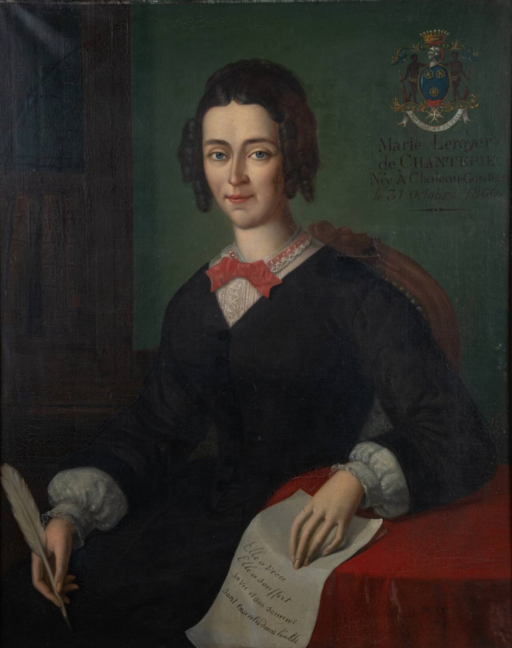Leroyer de Chantepie, Marie-Sophie (1800 - 1888)
Last edited by Tessa_vanWijk on July 15, 2025, 1:32 p.m.
| Short name | Leroyer de Chantepie, Marie-Sophie |
|---|---|
| VIAF | http://viaf.org/viaf/46808280 |
| First name | Marie-Sophie |
| Birth name | Leroyer de Chantepie |
| Married name | |
| Date of birth | 1800 |
| Date of death | 1888 |
| Flourishing | - |
| Sex | Female |
| Place of birth | Château-Gontier |
| Place of death | Angers |
| Lived in | Angers |
| Place of residence notes |
| Mother | |
|---|---|
| Father | |
| Children | |
| Religion / ideology | |
| Education | |
| Aristocratic title | - |
| Professional or ecclesiastical title | - |
| correspondent | Sand, George (pseudonym) |
| correspondent | Flaubert, Gustave |
| Profession(s) | |
|---|---|
| Memberships | |
| Place(s) of Residence | Angers |
Author of
| receptions | circulations | |
|---|---|---|
*Lettre à Sand (reading experience)
(1836)
|
0 | 0 |
| Cécile (1840~) | 1 | 0 |
| Les Duranti (1844) | 0 | 0 |
| Laurentia (1846) | 0 | 0 |
| *Probably record not finished (1850) | 0 | 0 |
| Angélique Lagier (1851) | 1 | 0 |
| Angèle, ou le Dévouement filial (1860) | 0 | 0 |
| Chroniques et légendes (1870) | 1 | 0 |
| Mémoires d'une provinciale (1880) | 0 | 0 |
| Une vengeance judiciaire (1888) | 0 | 0 |
Editor of
-Copyist of
-Illustrator of
-Translator of
-Circulations of Leroyer de Chantepie, Marie-Sophie, the person (for circulations of her works, see under each individual Work)
| Title | Date | Type |
Receptions of Leroyer de Chantepie, Marie-Sophie, the person
For receptions of her works, see under each individual Work.
| Title | Author | Date | Type |
|---|---|---|---|
| *Lettre à Leroyer de C. | 1842 | comments on person | |
| Unknown artist, portrait of Marie-Sophie Leroyer de Chantepie, ca. 1850. | 1850 | is portrait of |
Cf. James Smith Allen, Poignant relations. Three modern French women. Baltimore, 2000: In this book, James Smith Allen analyzes the works of three nineteenth and early twentieth-century French women writers to address larger issues of feminism, literary production, and modernity. Although the three figures—Marie-Sophie Leroyer de Chantepie (1800–1888), Geneviève Bréton-Vaudoyer (1849–1918), and Céline Renooz-Muro (1840–1928)—are little known today, Allen maintains that they represent an important gesture of feminism; that is, they wrote to construct meaningful lives that included agency, independence, and a critique of social and cultural constraints on women. None of these women identified herself as a feminist, but, according to Allen, they articulated "traces of feminist consciousness" in their discursive renderings of subjects vitally important to them: namely, marital, familial, sexual, and religious or scientific relationships. (rev.art. in American Hist. Review oct. 2005).
NOT MENTIONED IN:
- Buck, Guide
Corr.GS III, V, VI, XI, XIII, XV, XVII, XVIII, XXII, XXIII
14 notices Cat.BnF
